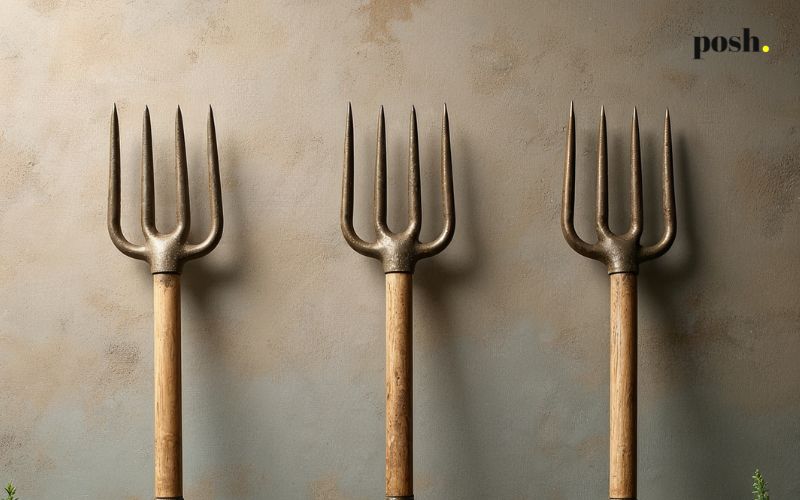How To Stop a Clay Chiminea From Cracking? | Posh Living Magazine

Key Takeaways -
- Seal and cover your chiminea to prevent moisture absorption.
- Gradually heat the chiminea with small fires to avoid thermal shock.
- Use appropriate fuels and avoid accelerants for safe operation.
- Regularly inspect and repair any minor damage to maintain the chiminea’s integrity.
Maintaining a clay chiminea is important to keep it in good condition. Cracking is a common issue, but with the right care, you can prevent it. So, if you're wondering, how do I stop my clay chiminea from cracking?
We will explain why clay chimineas crack and how to stop it. You'll also learn about sealing, seasoning, proper use, and regular maintenance tips. Keep reading to learn how to protect your chiminea and enjoy it for years.
By following these simple steps, you can keep your clay chiminea looking great and free from cracks. So let's get started!

Why Do Clay Chimineas Crack?
Thermal Shock
Thermal shock occurs when your chiminea is exposed to sudden temperature changes. Rapid heating or cooling can cause the clay to expand or contract too quickly, leading to cracks.
To prevent this, start with a small fire and gradually increase the heat, allowing the clay to warm up slowly.
Moisture Absorption
Clay chimineas are porous, which means they can absorb moisture. When the absorbed water heats up, it turns to steam and creates pressure within the clay, causing it to crack. To avoid this, keep your chiminea dry by using a waterproof cover and applying a sealer.
Improper Use and Maintenance
Improper use and lack of maintenance can significantly contribute to cracking. Using the wrong fuel type, placing the chiminea on an unstable surface, or not performing regular inspections can all lead to damage.
Follow the recommended guidelines for use and maintenance to ensure your chiminea stays in good condition.
How to Prevent Clay Chiminea From Cracking
Sealing Your Chiminea

Sealing your chiminea is essential to prevent moisture absorption, which can lead to cracking. Apply a sealer such as Future acrylic floor finish or Thompson’s Water Seal. Ensure the chiminea is clean and dry before applying two coats of the sealer.
This creates a protective barrier that keeps moisture out and significantly extends the lifespan of your chiminea. To maintain its effectiveness, reapply the sealer periodically, especially before and after the rainy season (1).
Using Protective Covers
Using a waterproof, breathable cover protects your chiminea from rain and moisture. A good cover reduces exposure to harsh weather, preventing water from seeping into the clay and causing cracks.
Always cover your chiminea when not used, particularly during wet weather or overnight. Ensure the cover fits well and allows for ventilation to prevent condensation buildup, which can also damage the chiminea.
Seasoning the Chiminea
Seasoning your chiminea involves building small, controlled fires to create a natural protective layer. Start with kindling and small logs, gradually increasing the fire size over several uses. This process helps seal hairline cracks with soot, ashes, and creosote, reducing the risk of thermal shock.
Seasoning prepares the chiminea for regular use by conditioning the clay to handle heat more effectively, thereby preventing future cracks.
Choosing the Right Fuel
Using the right fuel is essential to maintain the health of your chiminea. Opt for hardwood logs such as oak, hickory, or fruitwood, which burn steadily and produce consistent heat.
Avoid using treated wood, plywood, or wood with high moisture content, as these can cause excessive heat or release harmful chemicals. The right fuel ensures a stable, manageable fire that is less likely to damage the clay.
Managing Fire Size
Managing the size of your fires is important to prevent excessive heat, which can cause cracking. Keep your fires small and manageable, gradually building up the size as the chiminea heats up. Avoid large, roaring fires, which can create thermal shock and stress the clay.
Consistent, moderate fires help maintain an even temperature, protecting the chiminea from sudden temperature changes.
Avoiding Accelerants
Never use accelerants like lighting fluid, alcohol, or gasoline in your chiminea. These substances can cause explosive reactions and extreme temperatures, leading to cracks. Stick to natural fire starters and proper kindling to safely ignite your fires.
Using accelerants damages the chiminea and poses a significant safety hazard from the release of toxic fumes. Do not light fire straight into your chiminea; always use a fire pit or grate to protect the clay.
Proper Extinguishing Methods
Avoid using water to extinguish your chiminea fire, as the sudden temperature change can cause cracks. Instead, let the fire burn out naturally or use sand to smother the flames. A dry chemical fire extinguisher can also be used in emergencies.
Proper extinguishing methods help prevent thermal shock and ensure the longevity of your chiminea.
Routine Inspections
It is crucial to regularly inspect your chiminea for any signs of cracks or damage. Check both the interior and exterior for small chips or fractures. Early detection allows for timely repairs, preventing minor issues from becoming major problems.
Make inspections a part of your routine maintenance, especially after heavy use or extreme weather conditions.
Repairing Minor Damage

Use a clay repair kit to seal and reinforce the damaged areas for minor cracks. Follow the instructions carefully to ensure a proper fix. For significant damage, consult a professional to avoid further compromising the integrity of your chiminea.
Regular maintenance and prompt repairs will keep your chiminea in good working order, ensuring it remains a beautiful and functional part of your outdoor space for years.
Frequently Asked Questions
Can a Clay Chiminea Curing Process Prevent Cracks?
Yes, a proper curing process can help prevent cracks in a clay chiminea. Gradually heating the chiminea with small fires allows the clay to expand and contract slowly, reducing the risk of thermal shock.
This process helps seal any hairline cracks and strengthens the clay, making it more resistant to future damage.
Does Curing Apply to Both Cast Iron and Clay Chimineas?
No, the curing process specifically applies to clay chimineas, not cast iron ones. Clay chimineas require gradual heating to prevent cracks, while cast iron chimineas do not need this treatment.
Cast iron chimineas are more robust and can handle immediate high temperatures without the risk of cracking.
How Can I Prevent Chiminea from Cracking in Harsh Weather Conditions in Winter?
Store your chiminea indoors or use a waterproof, breathable cover to prevent it from cracking in harsh winter weather. Ensure the chiminea is completely dry before covering or storing it to avoid moisture absorption in freezing temperatures.
Regularly apply a sealer to protect the clay and inspect for any damage before winter sets in.
Does Rusting Increase the Risk of Cracks in Cast Iron Chimineas?
Yes, rusting can increase the risk of cracks in cast iron chimineas. Rust weakens the metal, making it more susceptible to heat and mechanical stress damage.
Regular maintenance, such as cleaning with a wire brush and applying a rust-resistant coating, can help prevent rust and protect your chiminea.
Conclusion

Preventing cracks in your clay chiminea requires proper sealing, seasoning, careful use, and regular maintenance.
By following these steps—applying a sealer, using a protective cover, choosing the right fuel, managing fire size, avoiding accelerants, and performing routine inspections—you can significantly extend the life of your chiminea.
Consistent care will ensure your chiminea remains a beautiful and functional part of your outdoor space for years.
Sources -












